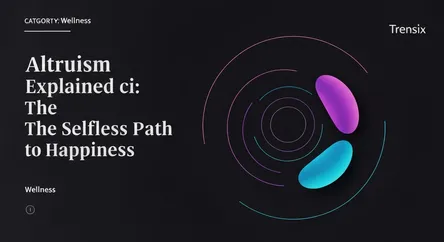Wellness
Altruism Explained: The Selfless Path to Happiness

Discover altruism, the practice of selfless concern for others, and how acts of kindness can improve both personal well-being and society.
What is it?
Altruism is the unselfish concern for the welfare of others. It involves acting out of a desire to help other people with no expectation of personal gain or reward. This behavior is a core component of prosocial behavior—any action intended to benefit others. True altruism is often motivated by empathy and compassion, driving individuals to assist even when it involves personal cost or risk. Examples range from small acts of kindness, like helping a neighbor, to significant sacrifices, such as volunteering in a crisis zone or donating an organ.
Why is it trending?
In an increasingly disconnected world, there is a growing desire for meaningful connections and purpose. Altruism is trending as a powerful antidote to feelings of isolation and cynicism. The global focus on mental health and wellness highlights the psychological benefits of giving, often referred to as a "helper's high." Social media platforms also play a role, amplifying stories of kindness and inspiring others to engage in community-focused actions. This has sparked a collective interest in fostering more compassionate and supportive societies through individual and group efforts.
How does it affect people?
Engaging in altruistic acts has profound effects on both the giver and the receiver. For the person performing the act, it can lead to increased happiness, reduced stress, and an improved sense of self-worth and purpose. This positive feeling creates a virtuous cycle, encouraging further acts of kindness. For the recipient, receiving help fosters a sense of gratitude, security, and social connection. On a broader scale, altruism strengthens community bonds, builds trust, and encourages a culture of cooperation, making society more resilient and harmonious for everyone.